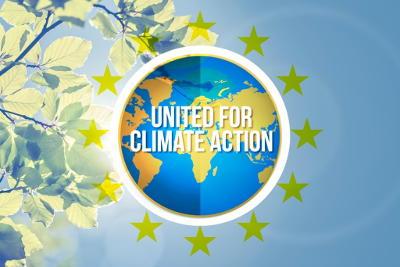On November 6, the world will meet for yet another conference on climate change. COP stands for Conference of the Parties, with “parties” referring to the 197 nations that agreed to the United Nations Framework Convention on Climate Change in 1992. We are still struggling to cut down on greenhouse gas emissions amid wars in Russia and Ukraine, the global energy crisis and rising inflation. United Nations hosts this conference annually.
At last year’s summit in Scotland, countries agreed they must immediately do more to prevent a dangerous rise in global temperatures. But fast action has not materialized. The consequences of climate change — including deadly floods in Pakistan, drought in the United States, famine in Africa and heat waves across Europe — are painfully clear. Tensions between rich polluting countries and poor nations bearing the brunt of climate impacts over the question of who should pay the costs of global warming are expected to mark this conference.
Representatives from more than 35,000 nations will be present at the conference. Climate protests are part of the heart and soul of the annual negotiations. In previous years activists have held marches, hunger strikes, sit-ins and other forms of civil disobedience to stress the urgency of the climate crisis.
This year a growing number of Egyptians are calling for protests while world leaders are in Sharm el Sheikh to highlight Egypt’s abysmal human rights record. But given that President Abdel Fattah el-Sisi’s government has essentially banned all demonstrations and criminalized free assembly, those demonstrations appear unlikely.
The first COP took place in Berlin in 1995, after a critical mass of nations ratified the climate convention. It was a milestone and set the stage two years later for the Kyoto Protocol, which at the time was a landmark global climate agreement.
But the Kyoto Protocol required only wealthy, industrialized nations to curb emissions while developing countries — including major emerging economies like China, India and Brazil — would reduce emissions voluntarily.
The United States Senate unanimously opposed it and so did President George W. Bush, setting in motion nearly two decades of wrangling over which nations bear the most responsibility for tackling climate change. In 2015, the Obama administration broke the impasse by leading nearly 200 countries to sign the groundbreaking Paris climate agreement. For the first time, rich and poor countries agreed to act, albeit at different paces, to tackle climate change.
The United States withdrew from the Paris accord under President Donald J. Trump but rejoined under President Biden.
Although leaders made big promises in Paris, countries have not taken enough actions to stave off the worst effects of climate change. In Glasgow last year, nations pledged to be more ambitious, and some have been. But a recent report from the United Nations found only about two dozen countries have followed through and pledged stronger action.
Scientists, activists and many world leaders agree that more ambition is needed even as countries start to make good on their plans to cut emissions.
– Darshini Shah




 we are online |
we are online |